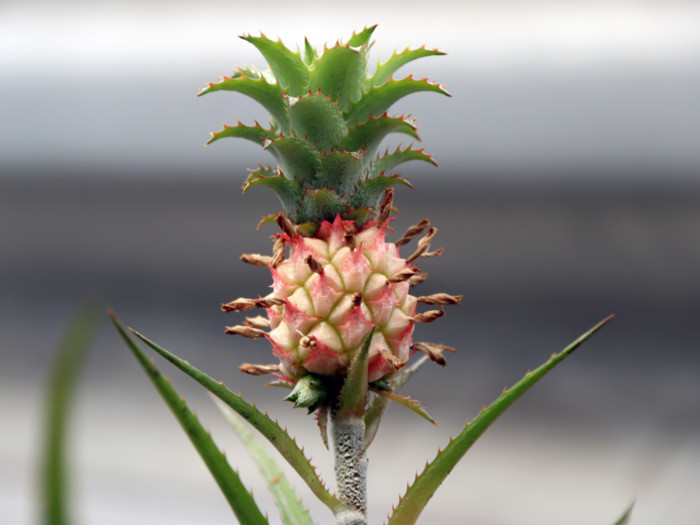Most people don’t notice pineapple seeds when they cut into these delicious tropical fruits, but the seeds are there and can be used to grow new pineapple plants if you have the time and patience.
Do Pineapples Have Seeds?
Unlike the seeds of many other popular fruits, such as apples, oranges, pears, and pomegranates, pineapple seeds aren’t as noticeable. They lie just below the surface of the skin and are found in those small “eyelets” in the sides of your pineapple. When slicing or preparing a pineapple, most of the seeds are simply cut away and discarded, leaving only the brown-edged pits where they once sat. [1]
Pineapple Seeds
These seeds are small and black in appearance and are embedded in the flesh near the rind of a pineapple. These seeds are notoriously hard to germinate, sometimes taking 2 years or more to sprout, but it is possible to do so. The far more popular approach to growing a new pineapple plant is to grow them vegetatively. In other words, when you slice off the spiky top of a pineapple, you can soak that in water until new roots begin to form, and then plant the pineapple crown in the ground. [2]
That being said, these small black seeds can lead to pineapple plants, but it requires quite a bit of effort and time on the part of the grower. The seeds aren’t commonly consumed for any culinary purposes, nor are they directly edible as a source of nutrients. In some cases, it can be difficult to separate the seeds from the rind, as they are quite small and directly next to the skin of the fruit when you are peeling. [3]

Pineapple is best enjoyed when ripe and bursting with sweetness. Photo Credit: Shutterstock
How Do You Plant Pineapple Seeds?
Once you separate the pineapple seeds from the flesh and skin of the fruit, you need to rinse the seeds and dry them. The following process is time-intensive, but it will eventually result in a pineapple plant. [4]
Step 1 – Place the seeds in an airtight glass container away from direct sunlight.
Step 2 – Within 2-3 weeks, the seeds should begin to germinate and sprout.
Step 3 – Fill 2/3 of a small plastic cup with soil.
Step 4 – Place the seeds of the pineapple under the soil, with the sprouts above it.
Step 5 – Cover the top of the cup with another plastic cup, forming a greenhouse-type container.
Step 6 – Water the seeds once per week, but be careful not to flood them with too much water.
Step 7 – As the sprouts increase in size, over the course of months, you may need to transplant them to larger pots.
Step 8 – The plants will continue to grow, and do not need to be covered any longer.
Step 9 – The first pineapples should appear between 20 months and 3 years from seed germination.
